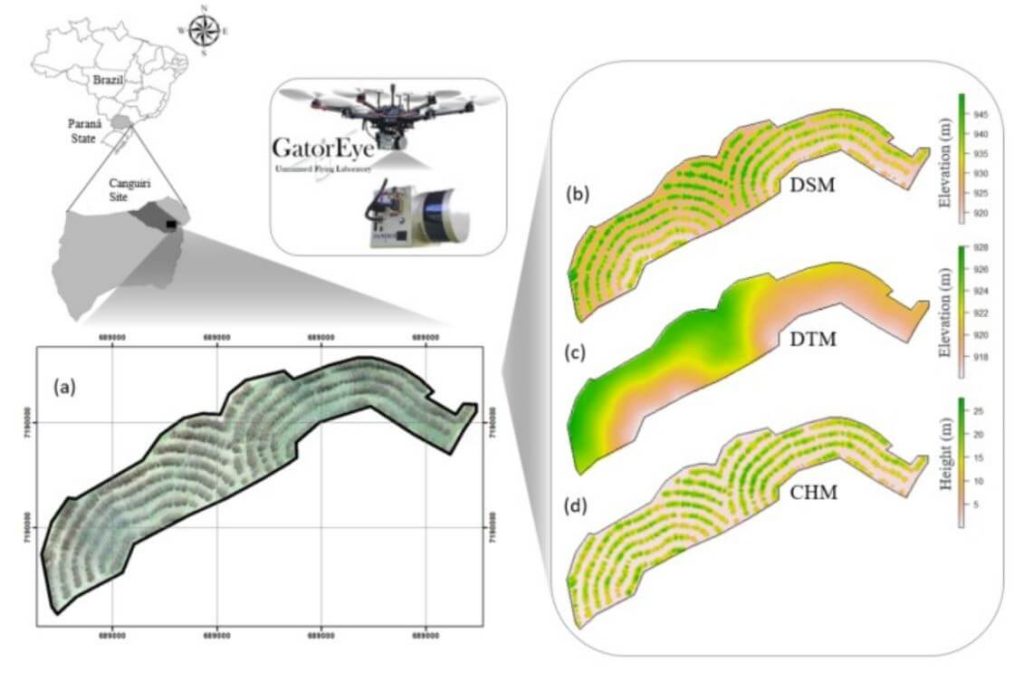Scout
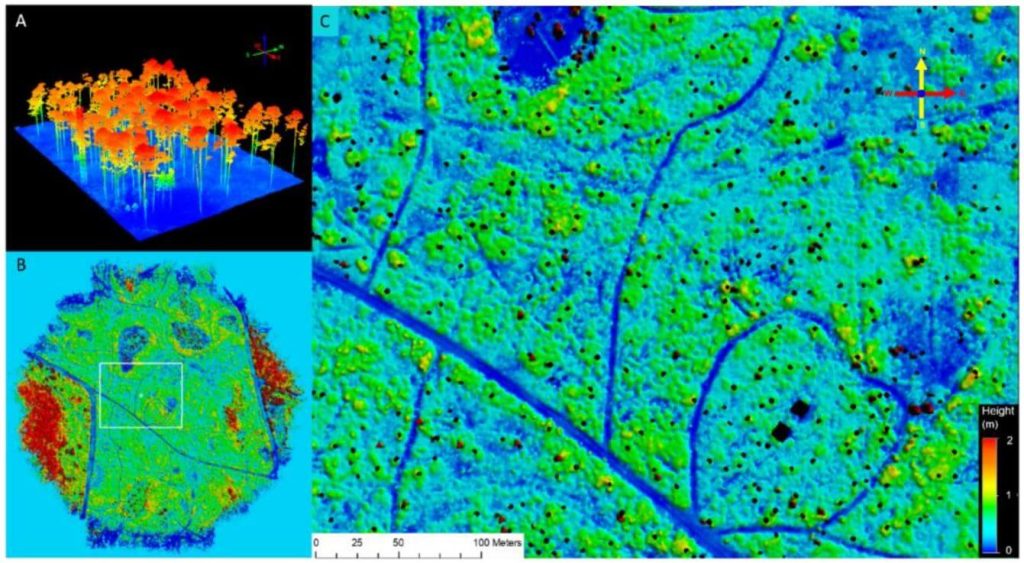
In the pine savannas of the southeastern United States, prescribed fire is commonly used to manipulate understory structure and composition. Understory characteristics have traditionally been monitored with field sampling; however, remote sensing could provide rapid, spatially explicit monitoring of understory dynamics. We contrasted pre- vs. post-fire understory characteristics collected with fixed area plots with estimates from high-density LiDAR point clouds collected using the unmanned aerial vehicle (UAV)-borne GatorEye system. Measuring within 1 × 1 m field plots (n = 20), we found average understory height ranged from 0.17–1.26 m and biomass from 0.26–4.86 Mg C ha−1 before the fire (May 2018), and five months after the fire (November 2018), height ranged from 0.11–1.09 m and biomass from 0.04–3.03 Mg C ha−1. Understory heights estimated with LiDAR were significantly correlated with plot height measurements (R2 = 0.576, p ≤ 0.001). Understory biomass was correlated with in situ heights (R2 = 0.579, p ≤ 0.001) and LiDAR heights (R2 = 0.507, p ≤ 0.001). The biomass estimates made with either height measurement did not differ for the measurement plots (p = 0.263). However, for the larger research area, the understory biomass estimated with the LiDAR indicated a smaller difference after the burn (~12.7% biomass reduction) than observed with in situ measurements (~16% biomass reduction). The two approaches likely differed because the research area’s spatial variability was not captured by the in-situ measurements (0.2% of the research area measured) versus the wall-to-wall coverage provided by LiDAR. The additional benefit of having spatially explicit measurements with LiDAR, and its ease of use, make it a promising tool for land managers wanting greater spatial and temporal resolution in tracking understory biomass and its response to prescribed fire.
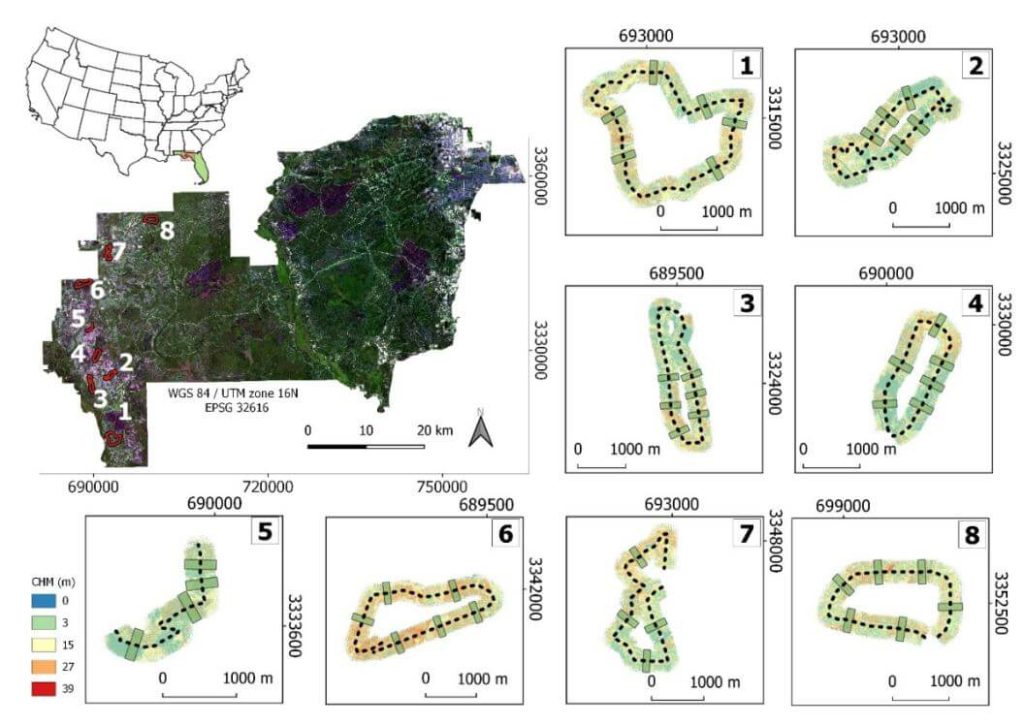
Changes in forest canopy structure due to natural disturbances, such as storms and hurricanes, can be monitored with high accuracy from active remote sensors such as LiDAR. The most common LiDAR data, able to perform large area ecosystem characterization, are acquired from aircraft platforms that demand a high operating cost and dependence on specialized companies and require medium-term planning, which often leads to long delays in data becoming available to decision makers.
These shortcomings considerably burden its efficacy for rapid response to natural disasters, which is a significant drawback for practical applications of airborne LiDAR. In contrast, unmanned aerial vehicles (UAV) are autonomous alternatives that allow rapid logistical planning and data collection over relatively large areas (hundreds to thousands of hectares). One of the main limitations of battery-powered UAV systems is the low flight efficiency due to their dependence on battery capacity.
It is, thus, of critical importance to develop sampling methods based on UAV single-pass surveys, which allow rapid large area assessment by concentrating in sampling locations of timely interest only. While airborne LiDAR sampling has been widely developed for very large area assessments, no study has yet tested the efficiency of single-pass flight sampling designs, more suited for UAVs.
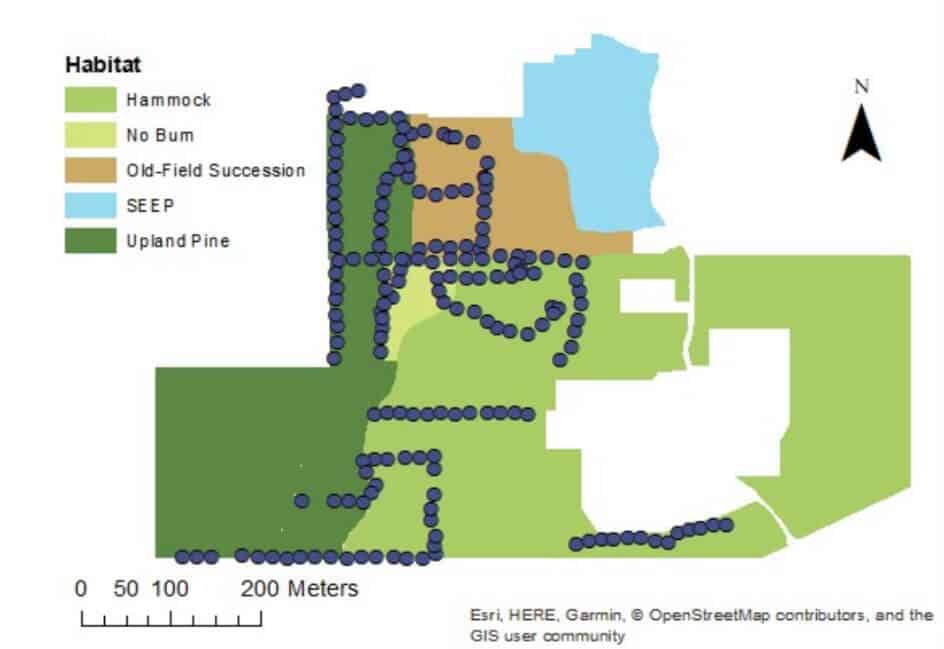
Remote sensing techniques have many applications for natural resource management and conservation, such as habitat analysis, measuring forest carbon stocks, protected area delineation, landscape modeling, and human impact surveys (e.g., logging, mining). Currently, among the remote sensing methodologies, light detection, and ranging (lidar) is the most accurate tool for quantifying forest structure characteristics.
These measures are accurate in a wide range of forested ecosystems and even have applications in urban settings. Unlike photogrammetric systems which use passive sensors requiring sunlight to illuminate the area of interest, lidar sensors actively emit laser pulses to create three-dimensional point clouds. When point cloud density is high, lidar can be used for measuring tree height, identifying tree species, estimating crown canopy profile, estimating biomass, and generating carbon projections at various spatial scales. Lidar sensors can be satellite or aircraft-borne, deployed above and below the canopy with unmanned aerial vehicles (UAVs), or ground-based.
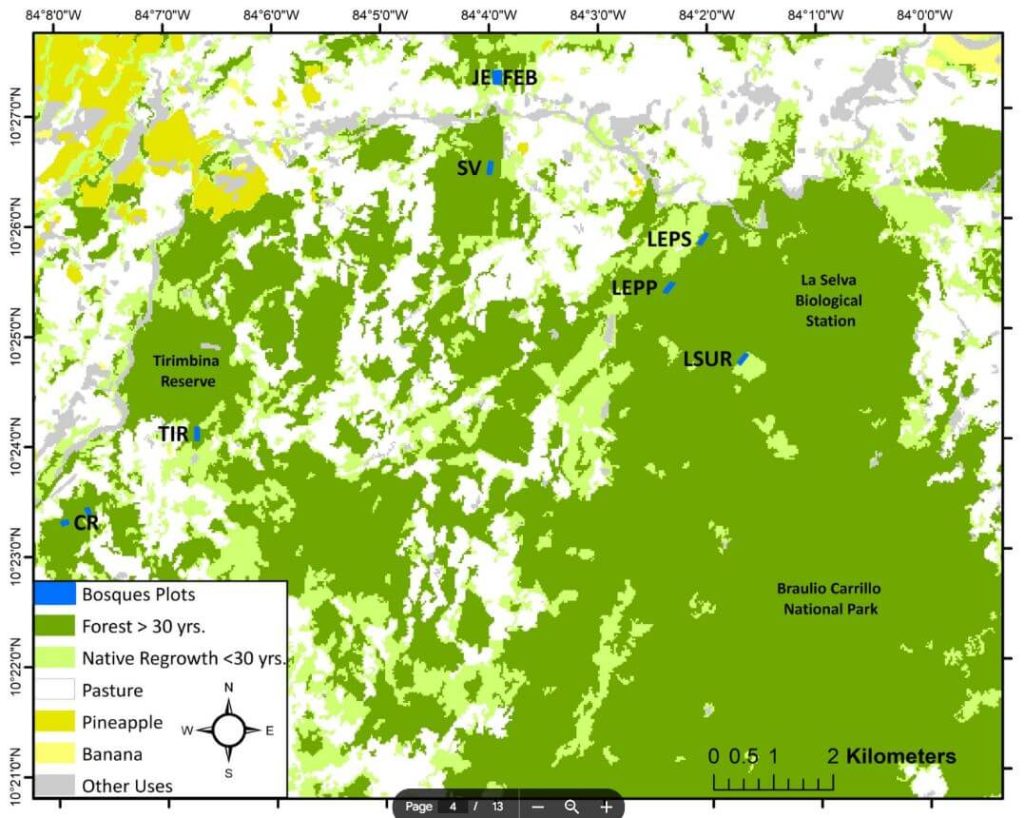
Drone-based remote sensing is a promising new technology that combines the benefits of ground-based and satellite-derived forest monitoring by collecting fine-scale data over relatively large areas in a cost-effective manner. Here, we explore the potential of the GatorEye drone-lidar system to monitor tropical forest succession by canopy structural attributes including canopy height, spatial heterogeneity, gap fraction, leaf area density (LAD) vertical distribution, canopy Shannon index (an index of LAD), leaf area index (LAI), and understory LAI. We focus on these variables’ relationship to aboveground biomass (AGB) stocks and species diversity. In the Caribbean lowlands of northeastern Costa Rica, we analyze nine tropical forests stands (seven second-growth and two old-growth). Stands were relatively homogenous in terms of canopy height and spatial heterogeneity, but not in their gap fraction. Neither species density nor tree community Shannon diversity index was significantly correlated with the canopy Shannon index. Canopy height, LAI, and AGB did not show a clear pattern as a function of forest age. However, gap fraction and spatial heterogeneity increased with forest age, whereas understory LAI decreased with forest age. Canopy height was strongly correlated with AGB. The heterogeneous mosaic created by successional forest patches across human-managed tropical landscapes can now be better characterized. Drone-lidar systems offer the opportunity to improve assessment of forest recovery and develop general mechanistic carbon sequestration models that can be rapidly deployed to specific sites, an essential step for monitoring progress within the UN Decade on Ecosystem Restoration. [register below to download full whitepaper]
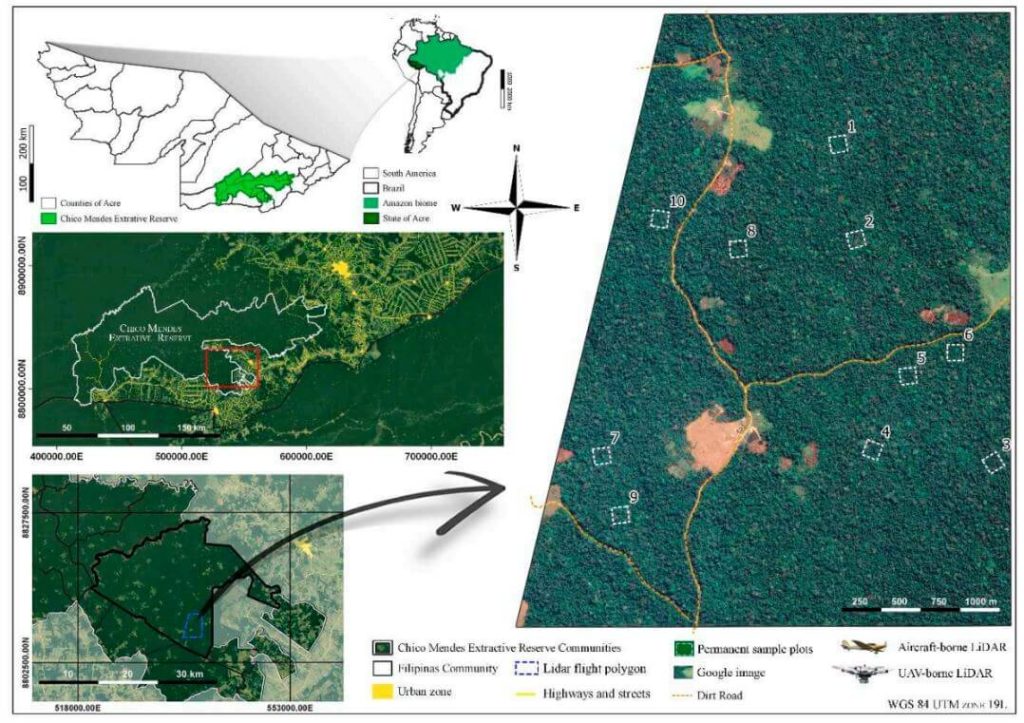
Tropical forests are often located in difficult-to-access areas, which make high-quality forest structure information difficult and expensive to obtain by traditional field-based approaches. LiDAR (acronym for Light Detection And Ranging) data have been used throughout the world to produce time-efficient and wall-to-wall structural parameter estimates for monitoring in native and commercial forests. In this study, we compare products and aboveground biomass (AGB) estimations from LiDAR data acquired using an aircraft-borne system in 2015 and data collected by the unmanned aerial vehicle (UAV)-based GatorEye Unmanned Flying Laboratory in 2017 for ten forest inventory plots located in the Chico Mendes Extractive Reserve in Acre state, southwestern Brazilian Amazon. The LiDAR products were similar and comparable among the two platforms and sensors. Principal differences between derived products resulted from the GatorEye system flying lower and slower and having increased returns per second than the aircraft, resulting in a much higher point density overall (11.3 ± 1.8 vs. 381.2 ± 58 pts/m2). Differences in ground point density, however, were much smaller among the systems, due to the larger pulse area and increased number of returns per pulse of the aircraft system, with the GatorEye showing an approximately 50% higher ground point density
(0.27 ± 0.09 vs. 0.42 ± 0.09). The LiDAR models produced by both sensors presented similar results for digital elevation models and estimated AGB. Our results validate the ability for UAV-borne LiDAR sensors to accurately quantify AGB in dense high-leaf-area tropical forests in the Amazon. We also highlight new possibilities using the dense point clouds of UAV-borne systems for analyses of detailed crown structure and leaf area density distribution of the forest interior.
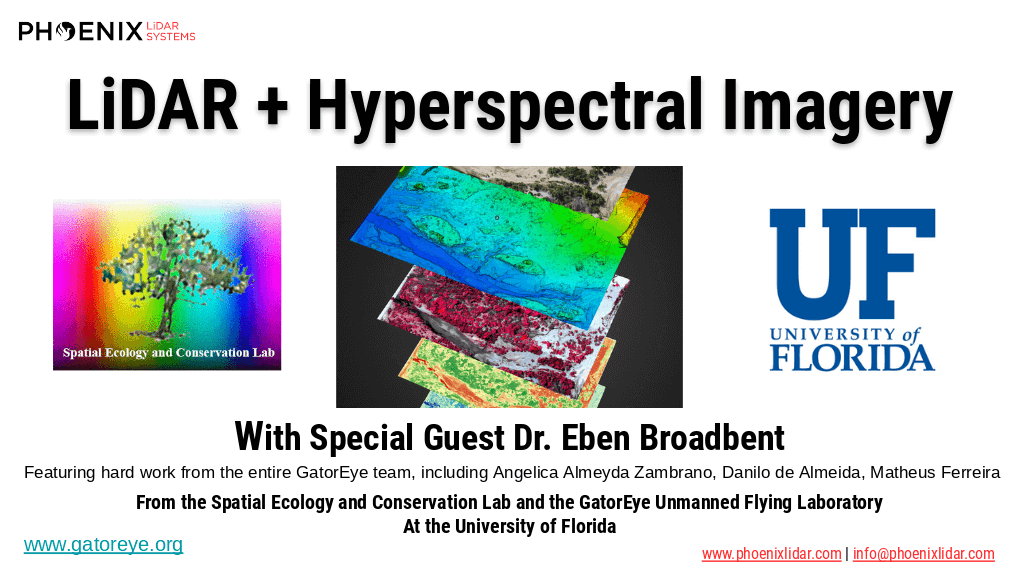
The high dimensionality of data generated by Unmanned Aerial Vehicle(UAV)-Lidar makes it difficult to use classical statistical techniques to design accurate predictive models from these data for conducting forest inventories. Machine learning techniques have the potential to solve this problem of modeling forest attributes from remotely sensed data. This work tests four different machine learning approaches – namely Support Vector Regression, Random Forest, Artificial Neural Networks, and Ex-
treme Gradient Boosting – on high-density GatorEye UAV-Lidar point clouds for indirect estimation of individual tree dendrometric metrics (field-derived) such as diameter at breast height, total height, and timber volume.
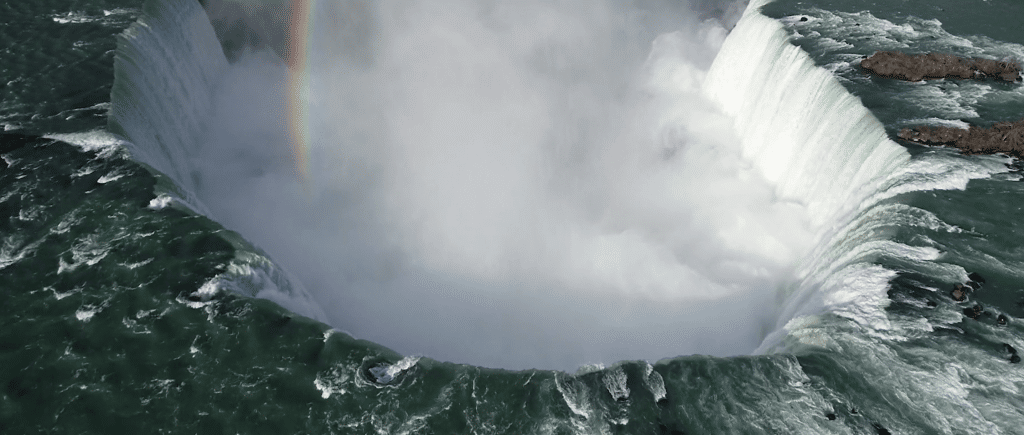
Mohawk College recently collaborated with the Niagara Parks Commission on a very important project. Mohawk was tasked with deploying their Phoenix LiDAR Scout 32 system in order to accomplish two primary objectives:
-Generate a precision high-res 3D model of the former Toronto Power Generation Station. The resulting data is to be utilized for rehabilitation work to help preserve this beautifully ornate and historically significant structure.
-Accurately scan and Geo-locate a century-old barge that had been stuck above Niagara Falls since 1918. This massive vessel dislodged itself just a few short months ago during a powerful storm. It found its new home 150 meters downstream when it lodged again, now much closer to Horseshoe Falls. Niagara Parks Officials are now monitoring for further movements, as it could shift again in the next couple of days, weeks or even years.
UAV LiDAR technology provided the Mohawk/Niagara team with the ability to Geo-locate the barge to within centimeter-level accuracy. During this mission, they were also able to scan the former Power Generation Station in order to generate a stunning, cultural-heritage preservation model.
Check out their fine work and some incredible footage from the Niagara Falls project here!
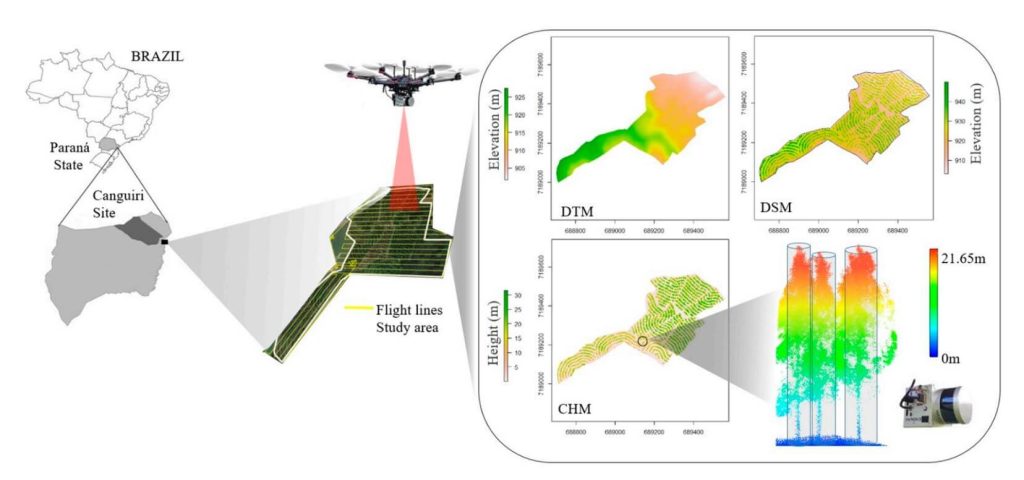
Accurate forest parameters are essential for forest inventory. Traditionally, parameters such as diameter at breast height (DBH) and total height are measured in the field by level gauges and hypsometers. However, field inventories are usually based on sample plots, which, despite providing valuable and necessary information, are laborious, expensive, and spatially limited. Most of the work developed for remote measurement of DBH has used terrestrial laser scanning (TLS), which has high density point clouds, being an advantage for the accurate forest inventory. However, TLS still has a spatial limitation to application because it needs to be manually carried to reach the area of interest, requires sometimes challenging field access, and often requires a field team. UAV-borne (unmanned aerial vehicle) lidar has great potential to measure DBH as it provides much higher density point
cloud data as compared to aircraft-borne systems. Here, we explore the potential of a UAV-lidar system (GatorEye) to measure individual-tree DBH and total height using an automatic approach in an integrated crop-livestock-forest system with seminal forest plantations of Eucalyptus benthamii.
